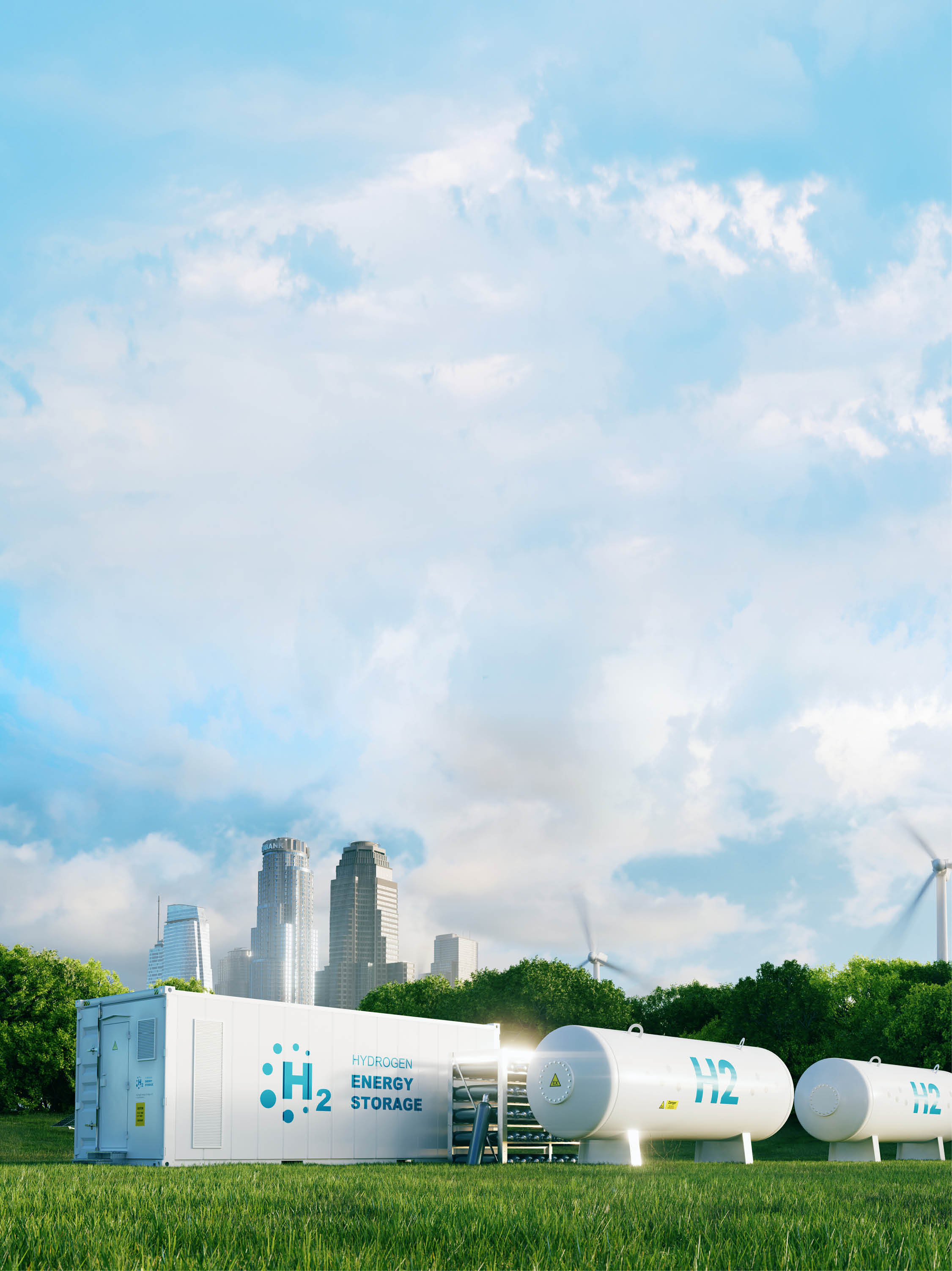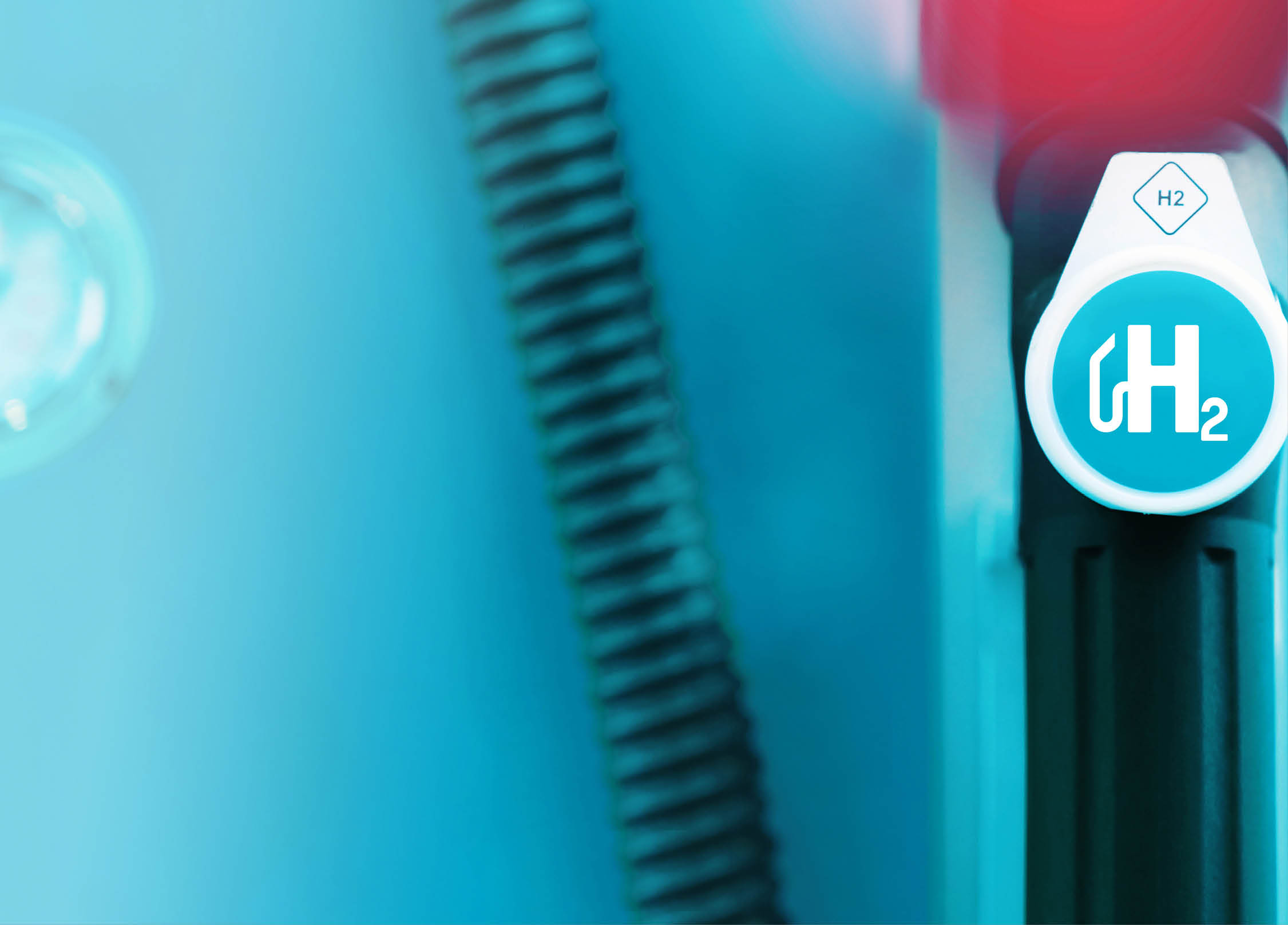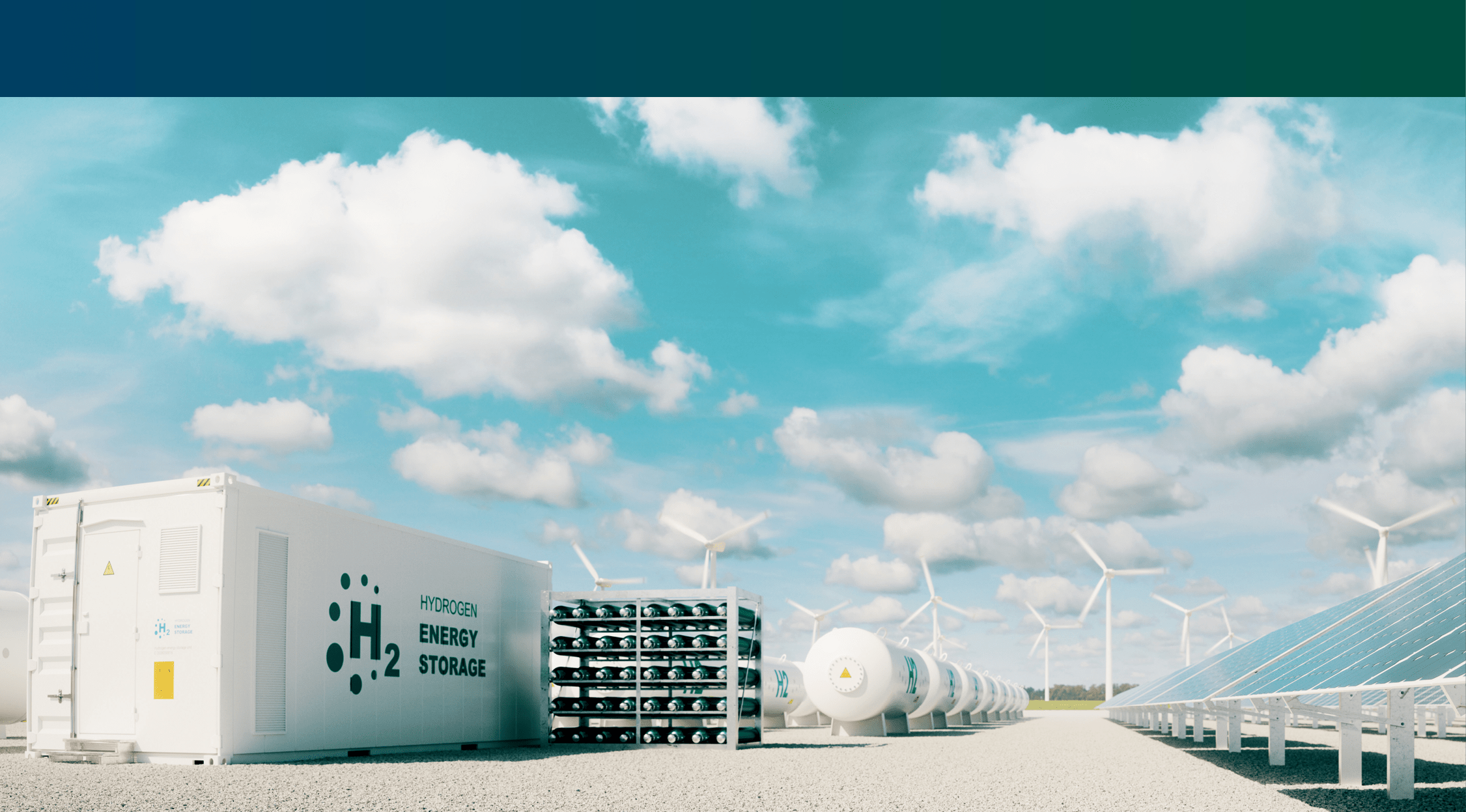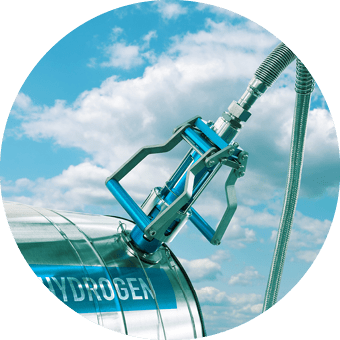







Home
Power
Hydrogen has clear potential in sectors such as energy storage.
Industry
In Spain, around 500,000 tonnes of (mainly grey) hydrogen are consumed annually, primarily in manufacturing and refineries (mostly located in Huelva, Cartagena, Puertollano and Tarragona).
Transport (road, rail, maritime and aviation).
Hydrogen fuel cells are seen as the most promising route to integrate hydrogen into the transport industry, usually installed in combination with electric batteries that self-recharge during the operation of the vehicle.
 The main regulation applicable to hydrogen is Law 34/1994, of 7 October, on the Hydrocarbons Sector, and its recent amendments:
The main regulation applicable to hydrogen is Law 34/1994, of 7 October, on the Hydrocarbons Sector, and its recent amendments:
 Until 20 October 2023, the reform of the Technical Management Rules of the System, which envisages a 5% blending limit in Spain, is in the public hearing phase (https://energia.gob.es/en-us/participacion/paginas/detalleparticipacionpublica.aspx?k=638)
Until 20 October 2023, the reform of the Technical Management Rules of the System, which envisages a 5% blending limit in Spain, is in the public hearing phase (https://energia.gob.es/en-us/participacion/paginas/detalleparticipacionpublica.aspx?k=638)
Other key legislation includes:
 Royal Decree 1434/2002, of 27 December, regulating transport, distribution, marketing, supply and authorisation procedures of natural gas facilities.
Royal Decree 1434/2002, of 27 December, regulating transport, distribution, marketing, supply and authorisation procedures of natural gas facilities.
 Law 7/2021, of 20 May, on climate change and energy transition.
Law 7/2021, of 20 May, on climate change and energy transition.
 Royal Decree 376/2022, of 17 May, regulating guarantees of origin of renewable gas (GOORG) and Ministerial Order TED/1026/2022, of 28 October, which develops its Management Procedure.
Royal Decree 376/2022, of 17 May, regulating guarantees of origin of renewable gas (GOORG) and Ministerial Order TED/1026/2022, of 28 October, which develops its Management Procedure.
Support schemes in Spain are regulated by a subset of legislative instruments:
 Order TED/1445/2021, of 22 December, which approves the regulatory bases for the granting financial assistance via Spain's H2 Pioneers Programme.
Order TED/1445/2021, of 22 December, which approves the regulatory bases for the granting financial assistance via Spain's H2 Pioneers Programme.
 Order TED/1444/2021, of 22 December, which approves the regulatory bases for granting financial assistance via Spain's H2 Chain of Value Programme.
Order TED/1444/2021, of 22 December, which approves the regulatory bases for granting financial assistance via Spain's H2 Chain of Value Programme.
 As part of Spain's energy transition and net zero objectives, this PERTE foresees a public investment of €3.1 billion to help mobilise up to €11.8 billion of total investment in transitioning industry to more environmentally sustainable processes.
As part of Spain's energy transition and net zero objectives, this PERTE foresees a public investment of €3.1 billion to help mobilise up to €11.8 billion of total investment in transitioning industry to more environmentally sustainable processes.
(approved by the Spanish Council of Ministers on 13 July 2021).
 Support for the development of hydrogen-powered vehicle is partly administered under this PERTE. Orders ICT/1466/2021; ITC/359/2022; and ICT/209/2022 regulate financial aid corresponding to this PERTE.
Support for the development of hydrogen-powered vehicle is partly administered under this PERTE. Orders ICT/1466/2021; ITC/359/2022; and ICT/209/2022 regulate financial aid corresponding to this PERTE.
Hydrogen production in Spain is currently classified as a chemical industry activity, regardless of the renewable or non-renewable origin of the hydrogen. This classification as a “chemical industry” entails certain regulatory restrictions (especially in terms of industrial security, environmental and land use rules).
Spain is aiming to be one of the leading producers and exporters of green hydrogen in Europe – a status established through flagship projects such as the H2MeD project – a subsea hydrogen pipeline jointly developed by France, Spain and Portugal capable of transporting 2 million tonnes of green hydrogen per year from Spain.
In its application of the Spanish Hydrogen Roadmap, Spain has focused on:
 Developing hydrogen support schemes;
Developing hydrogen support schemes;
 Development and construction of green hydrogen production projects connected to the Spanish natural gas network or directly to consumers; and
Development and construction of green hydrogen production projects connected to the Spanish natural gas network or directly to consumers; and
 Permits and environmental rules.
Permits and environmental rules.
On 28 June 2023, Spain's draft new Integrated National Energy and Climate Plan 2030 (NECP) was published for the period 2023–2030, projecting green hydrogen production to grow to 11 GW of installed electrolysers by 2030.
Until 17 November, ENAGAS (TSO) has launched a Call For Interest process for the first axes of the Spanish Hydrogen Backbone Network. This first market test will allow to have a verified analysis of the potential renewable hydrogen market in Spain, with the aim of defining an adapted proposal of infrastructures. This analysis is key to accelerate the creation of a competitive hydrogen market in Spain and Europe. This, which also includes a specific consultation on ammonia, CO2 and oxygen precedes a future binding Open Season process that will enable the allocation of the capacity of hydrogen transport infrastructures to their future users.

Key legislation
Key regulatory bodies
The PERTE (Strategic Projects for Economic Recovery and Transformation) are a new instrument of public-private collaboration between public administrations, companies and research centres. With designation as PERTE, a sector is identified as a key area for the future of the economy.
PERTE ERHA
 The main regulatory body responsible for energy is the Ministry for the Ecological Transition and the Demographic Challenge (MITERD).
The main regulatory body responsible for energy is the Ministry for the Ecological Transition and the Demographic Challenge (MITERD).
 The Ministry of Industry, Trade and Tourism is also relevant in the design of aid to industry, given the focus of hydrogen support schemes on serving Spain's industrial sector.
The Ministry of Industry, Trade and Tourism is also relevant in the design of aid to industry, given the focus of hydrogen support schemes on serving Spain's industrial sector.
According to the constitutional system of distribution of competences in Spain, the competent departments of the Autonomous Communities are also relevant, especially with regard to permitting and environmental issues.
The Instituto para la Diversificación y el Ahorro de la Energía (IDAE) is also significant for its role in managing state aid, while the transmission system operator (TSO) ENAGAS also has an important role to play.
The Spanish Hydrogen Roadmap aims to review the technical rules applicable to natural gas infrastructure to allow a higher proportion of blending of hydrogen within the gas system (currently 5% is allowed).
Spain forecasts it will be exporting hydrogen by 2030, and accordingly plans to upgrade its existing interconnectors with France and Portugal as part of the H2MeD project.
Spanish and EU authorities recognise that a potential connection with North of Africa through the Iberian Peninsula could be considered if countries such as Morocco and Algeria develop sufficient production capacity to export green hydrogen that is compliant with EU standards.

PERTE for the Development of the Electric and
Connected Vehicle
Industrial decarbonisation PERTE
 Project of Common European Interest (IPCEI): governs approval of aid to manufacturing companies participating in the industrial chain of renewable hydrogen, from projects with public, social or economic interest, or other duly justified reasons (RD 251/2023).
Project of Common European Interest (IPCEI): governs approval of aid to manufacturing companies participating in the industrial chain of renewable hydrogen, from projects with public, social or economic interest, or other duly justified reasons (RD 251/2023).
IPCEI
Although the hydrogen trading model is not sufficiently developed in Spain, under its H2 Pioneers II Programme, the IDAE has published a Memorandum of Understanding for the purchase and sale of renewable hydrogen, and a Memorandum of Understanding for the self-consumption of renewable hydrogen.
Hydrogen can either be delivered as a finished product, or supplied under a tolling agreement where the consumer supplies the raw materials to a producer.
Selling opportunities

Hydrogen purchase agreements (HPAs) in Spain
Some of the main characteristics of an HPA in Spain include:
 Governing Law: HPAs will be governed by the laws of the country or state where the agreement is executed.
Governing Law: HPAs will be governed by the laws of the country or state where the agreement is executed.
 Duration of the contract: This is essential for the allocation of risks and pricing structure. For long-term HPAs (10-15 years), these will need to take into account applicable limitations on competition so that barriers to entry are not created for potential competitors.
Duration of the contract: This is essential for the allocation of risks and pricing structure. For long-term HPAs (10-15 years), these will need to take into account applicable limitations on competition so that barriers to entry are not created for potential competitors.
 Green hydrogen: If the acquisition of renewable hydrogen is intended, forecasts contained in Commission Delegated Regulation (EU) 2023/1184 must be included. It should also include clauses relating to the PPA for renewable energy, where applicable.
Green hydrogen: If the acquisition of renewable hydrogen is intended, forecasts contained in Commission Delegated Regulation (EU) 2023/1184 must be included. It should also include clauses relating to the PPA for renewable energy, where applicable.
 Risk allocation clauses, for example, in relation to the specific delivery dates and the hydrogen's renewable status.
Risk allocation clauses, for example, in relation to the specific delivery dates and the hydrogen's renewable status.
 Volume clauses: Take or pay clauses can be established, requiring the consumer to take a certain volume (possibly with some flexibility) on a periodic basis or pay a penalty.
Volume clauses: Take or pay clauses can be established, requiring the consumer to take a certain volume (possibly with some flexibility) on a periodic basis or pay a penalty.
 Price: The HPA will specify the price at which the hydrogen will be sold, and structured in a number of separate categories, namely: (i) the product price, (ii) a transport charge, (iii) a logistics and dispatch charge, and (iv) allowances for export and import duties. Parties may include provisions for adjustments based on market conditions or other factors.
Price: The HPA will specify the price at which the hydrogen will be sold, and structured in a number of separate categories, namely: (i) the product price, (ii) a transport charge, (iii) a logistics and dispatch charge, and (iv) allowances for export and import duties. Parties may include provisions for adjustments based on market conditions or other factors.
 Delivery schedule: The agreement will outline the schedule for delivery of the hydrogen, including the frequency, quantities, measurement and location of delivery.
Delivery schedule: The agreement will outline the schedule for delivery of the hydrogen, including the frequency, quantities, measurement and location of delivery.
 Quality standards: The HPA will set out the quality standards for the product, including any specifications for purity, pressure, and temperature. To the extent that a standard has not been developed in Spain, reference should be made to the EU standard, but with reference to relevant Spanish safety and technical specifications.
Quality standards: The HPA will set out the quality standards for the product, including any specifications for purity, pressure, and temperature. To the extent that a standard has not been developed in Spain, reference should be made to the EU standard, but with reference to relevant Spanish safety and technical specifications.
 Warranty and guarantee: The agreement may include warranties or guarantees provided by the supplier, such as a guarantee of the quality or quantity of the hydrogen fuel. Consumer guarantees may also be required depending on their credit rating.
Warranty and guarantee: The agreement may include warranties or guarantees provided by the supplier, such as a guarantee of the quality or quantity of the hydrogen fuel. Consumer guarantees may also be required depending on their credit rating.
 Termination and termination rights: The HPA will include provisions for termination of the agreement, including notice periods and conditions under which either party may terminate the HPA.
Termination and termination rights: The HPA will include provisions for termination of the agreement, including notice periods and conditions under which either party may terminate the HPA.
 Force majeure
Force majeure
 Liability and indemnification: The agreement will outline the liabilities and indemnification provisions of both parties in case of any breach of contract or damage caused by product.
Liability and indemnification: The agreement will outline the liabilities and indemnification provisions of both parties in case of any breach of contract or damage caused by product.
 Dispute resolution: The agreement will specify the procedures for resolving disputes.
Dispute resolution: The agreement will specify the procedures for resolving disputes.
Key legal and commercial issues in HPAs in Spain
 The PERTE for Renewable Energies, Renewable Hydrogen and Storage (PERTE ERHA, approved on 14 December 2021) has a budget of more than €16.3 billion.
The PERTE for Renewable Energies, Renewable Hydrogen and Storage (PERTE ERHA, approved on 14 December 2021) has a budget of more than €16.3 billion.
Key programmes under this PERTE include:
Eligible projects include green hydrogen production facilities (with a maximum power of 50 MW of electrolysis), distribution, industrial uses and heavy mobility, as well as innovative stationary applications, such as ports, airports, logistics platforms and storage systems with re-electrification.
Projects should aim at the production, distribution and use of renewable hydrogen in the same territorial location as industrial pools already consuming grey hydrogen and in isolated energy systems, as well as the integration of hydrogen in new transport uses, thermal uses in industry and certain stationary uses.
Grants were available to private companies, consortia or business groups (with participation of an SME); public sector entities; and public universities and affiliated technology centres.
A second call for the development of fundamental research projects, innovative pilots and training in key enabling technologies within the renewable hydrogen value chain was issued this in 2023 with a deadline in November 2023.
Beneficiaries of these grants are subject to further approvals if the entity in question undergoes a structural modification.
(approved on
27 December 2022)
 The EU Innovation Fund/Hydrogen Bank is an EU-level fund aiming to bridge the cost gap between green hydrogen and hydrogen production based on carbon-emitting fossil fuels, with hydrogen producers invited to bid for financial support based on their anticipated production of green hydrogen.
The EU Innovation Fund/Hydrogen Bank is an EU-level fund aiming to bridge the cost gap between green hydrogen and hydrogen production based on carbon-emitting fossil fuels, with hydrogen producers invited to bid for financial support based on their anticipated production of green hydrogen.
The EU Innovation Fund/Hydrogen Bank
Further support schemes for Spain's combined heat and power generators are envisaged, to allow them to integrate renewable hydrogen into their systems.
The heavy industries envisaged as targets for hydrogen are covered by the EU-ETS, which in turn is governed by Law 1/2005, of 9 March, which regulates the greenhouse gas emission allowance trading scheme.
Regulatory requirements for hydrogen energy installations and electrolysers










Support schemes

Selling hydrogen in Spain



On 28 June 2023, Spain's draft new Integrated National Energy and Climate Plan 2030 (NECP) was published for the period 2023–2030, projecting green hydrogen production to grow to 11 GW of installed electrolysers by 2030.













